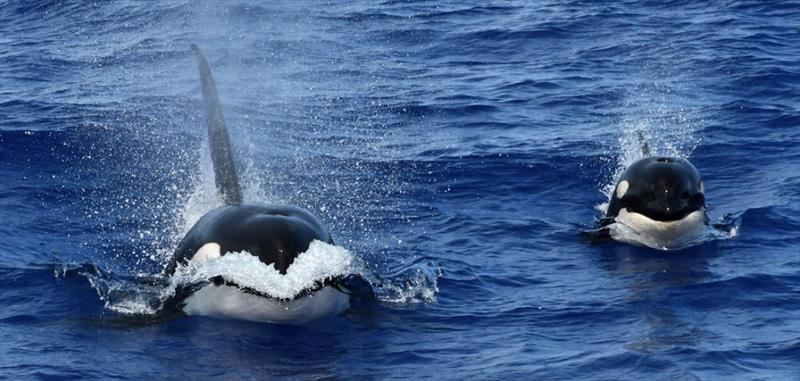
Whale science on the high seas
by NOAA Fisheries 6 Jan 2018 22:52 UTC

Killer whales on HICEAS research survey in Hawaii © NOAA Fisheries
People may think six months in Hawaii sounds like a vacation, but 46 scientists and crew aboard NOAA ships Oscar Elton Sette and Reuben Lasker spent the past 179 days hard at work. The teams surveyed an impressive 1.8 million square nautical miles around the main and Northwestern Hawaiian Islands as part of the Hawaiian Islands Cetacean and Ecosystem Assessment Survey (or HICEAS).
This methodical research helped NOAA scientists better understand the structure of whale and dolphin populations and their unique habitats. The teams had the opportunity to encounter and study 23 species of whales and dolphins, including false killer whales — a top priority for the survey — and update data about their population size that will inform bycatch reduction strategies. Scientists saw several beaked whales during HICEAS, including the rare Longman's beaked whale, which has only recently been named after spending years with a case of mistaken identity.
"Our teams captured an amazing amount of whale and dolphin data — totaling 345 encounters with 23 different species," said Erin Oleson, co-chief scientist. "One encounter from the last day of HICEAS stands out. As the ship headed back into port in Honolulu, the team came across an unusual grouping of sperm whales, Longman's beaked whales, pilot whales — and then a fin whale lumbering through for good measure. What a great way to end the survey!"
The survey also provided an opportunity for large-scale collaboration between two NOAA Fisheries science centres. "NOAA's Southwest Fisheries Science Center in California, and Pacific Islands Fisheries Science Center in Hawaii, have a long history of working together to make scientific discoveries about marine mammals in the northern Pacific Ocean," said Jeff Moore, co-chief scientist. "We study some of the same populations and have many of the same research questions, so it makes sense to tackle these scientific inquiries together. By sharing our expertise, the research is stronger."
See what scientists found while surveying the Hawaiian Islands by visiting the survey website, viewing the storymap and reading blogs from the scientists and crew.